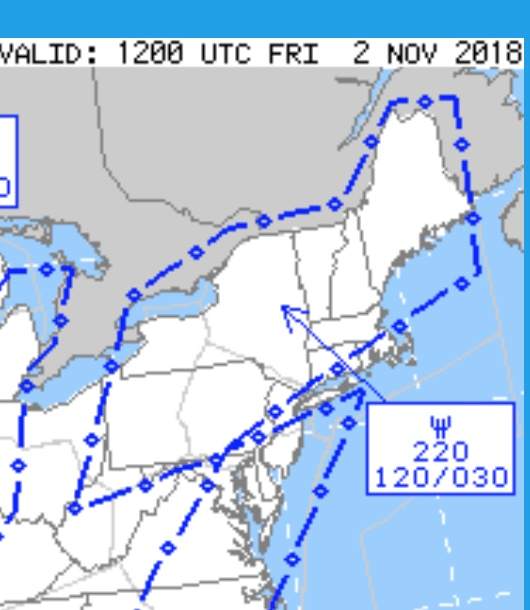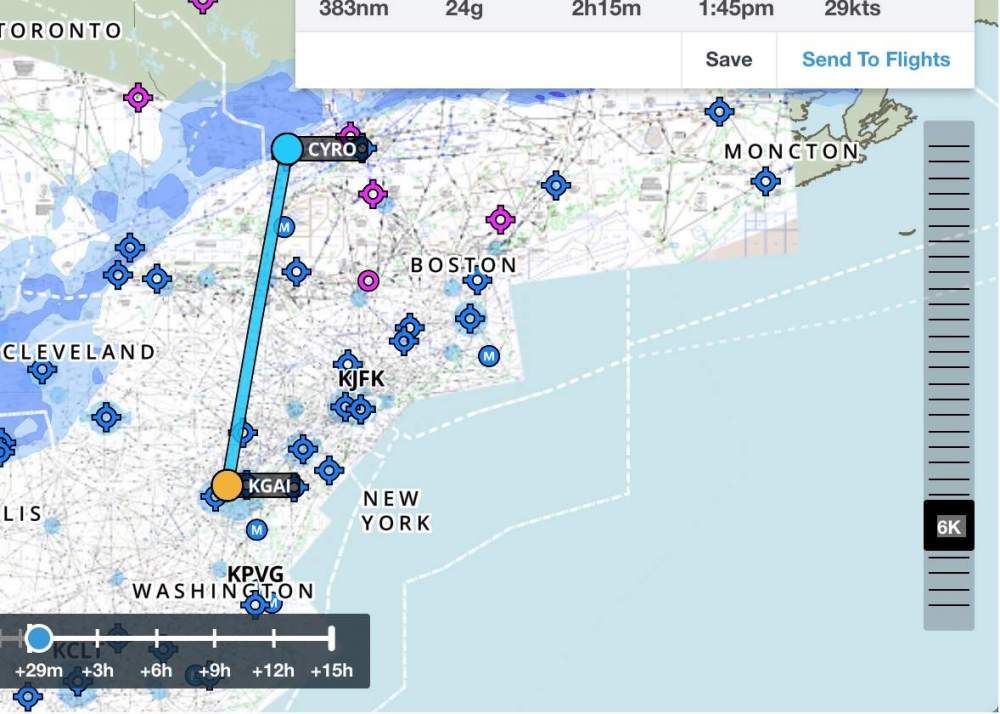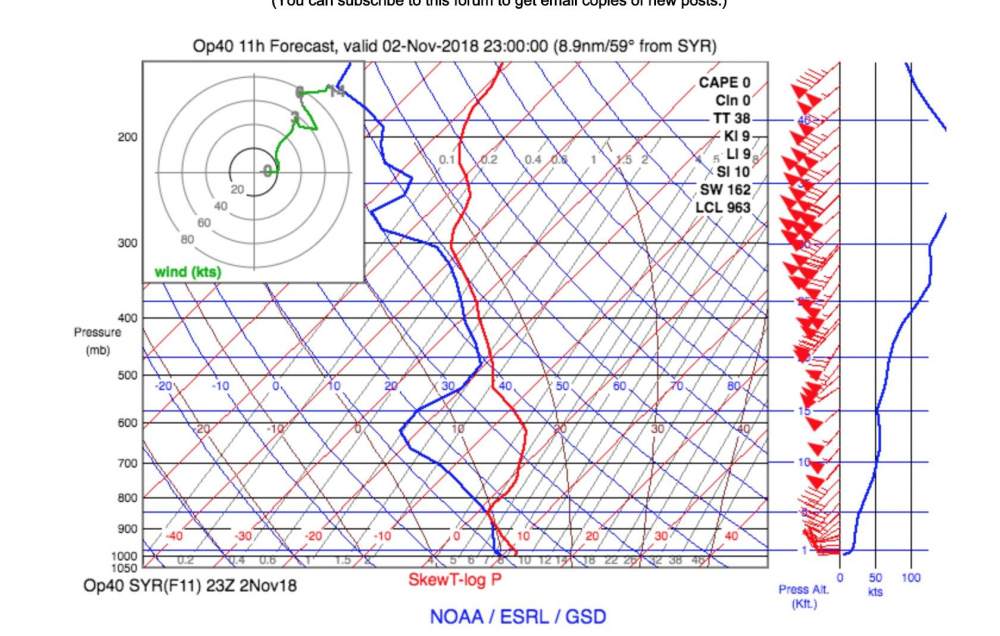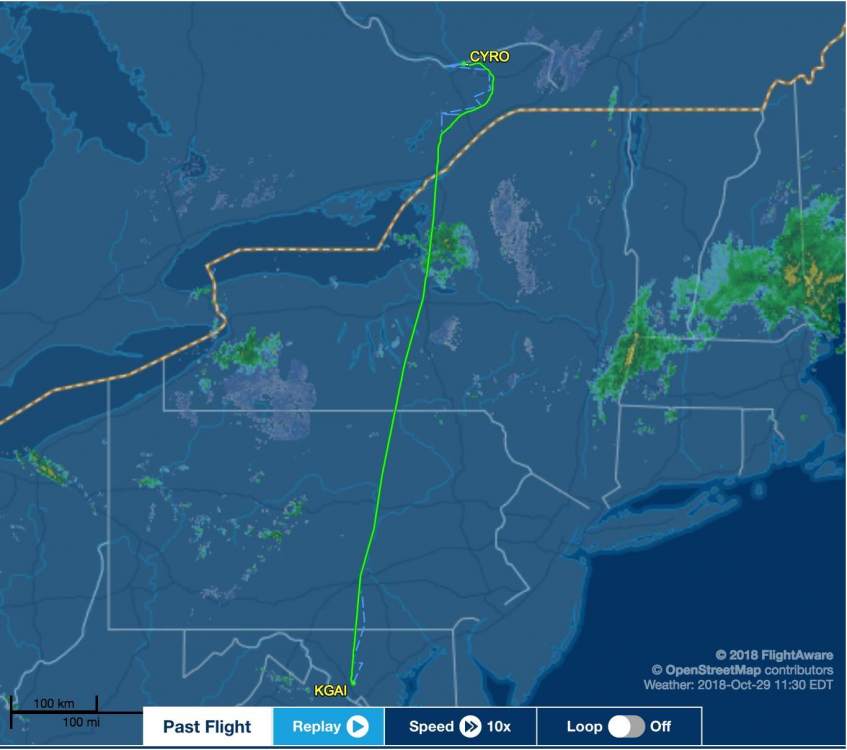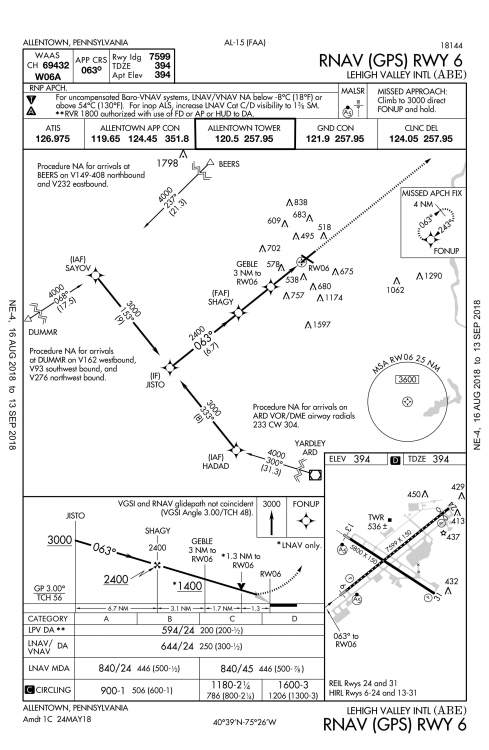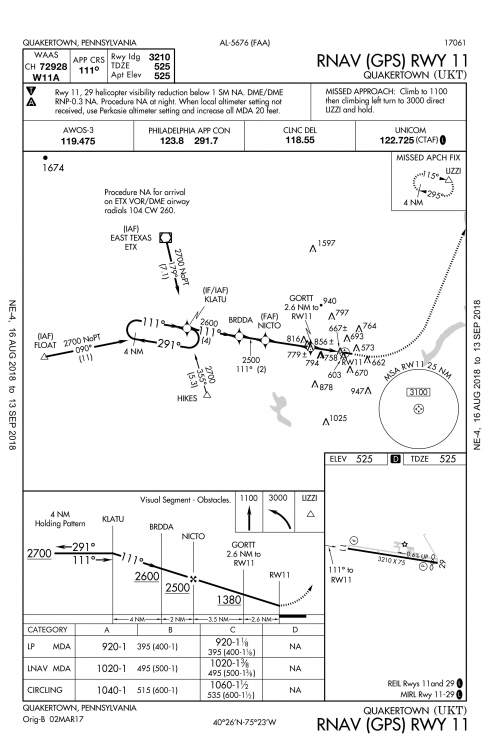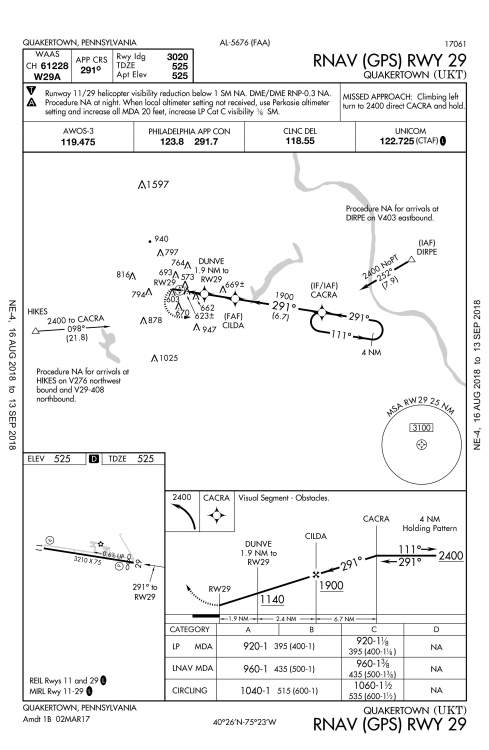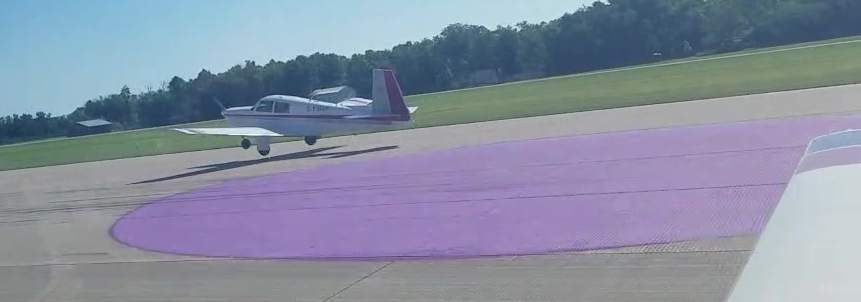
Ned Gravel
Supporter-
Posts
2,069 -
Joined
-
Last visited
-
Days Won
2
Content Type
Profiles
Forums
Blogs
Gallery
Downloads
Events
Store
Everything posted by Ned Gravel
-
+1
-
What is your icing strategy?
Ned Gravel replied to Scott Dennstaedt, PhD's topic in Miscellaneous Aviation Talk
Robert: No one will tell you that you are being too conservative. Be conservative and live to fly another day. Simple. People who face something they have not trained for or are not familiar with are just about guaranteed to make mistakes. Many of those folks, in an activity that has the risks associated with ours, do not live to do it again. Don't do that. Be risk adverse until you are confident that you can expand your own envelope. I use AIRMET info to show where icing is being forecast - in this case from 3,000' to 12,000'. I use Foreflight icing predictions (US). This one shows New England predictions for icing at 6,000' I use Skew-T charts, such as this one for Syracuse New York, 12 hours from now. It shows cloud bases at 3,200' and tops near 5,000'. Higher layers probable near 20,000'. There are now a couple of scenarios open to you. If you can get a VFR climb to tops and not enter a cloud under these conditions, you MAY (not guaranteed) be able to stay out of icing. That was my plan a couple of days ago and it almost backfired. I had outs the entire way until I crossed the border to Canada, but I was much lower in Canada than in the US, reducing the possibility of icing. In this chart, note that the 0 degree red diagonal line crosses the dew point temperature line (blue squiggle) at just over 5.000' and it crosses the actual temperature line (red squiggle) just under 10,000'. Anything higher and more to the left on this chart means icing where clouds are. Perhaps not where clouds are not - but not guaranteed. I would not do this flight under these conditions. Although icing is forecast on the AIRMET, and while Foreflight predicts none at 6,000' the whole way home, the Skew T charts tell me that there will be cloud to fly through. In the flight that I did, Ottawa was supposed to be clear below 9,000'. The forecast was wrong. It was not. So be conservative. If you are not comfortable with what your tools tell you now, trust your instincts. They will keep you alive. -
I was in that mess yesterday too. I held off two days because of the forecast ice. Yesterday was the first day that showed layers (that should be free of ice) and most tops below 9000'. Worked great until abeam of Elmira airport (about 90 minutes into a 3 hour flight). Tops came to me and I started picking up ice. Plan B = ask lower looking for warmer temperatures and continue on route. If Plan B fails, go to Plan C - ask lower again and direct Elmira (approach to the current runway in use was already loaded) Plan B worked. Down at 5000' (I picked a route where the MEA was mostly 3000' or 3500' feet, all below the forecast icing level) I was now in clag, but temps were +1 and melting of the little bit of ice accumulated thus far. Until Syracuse where you can see the "visible moisture" showing on the Flightaware graphic above. In talking to Wheeler Sack, asked for 3000', and they held me off until a Piedmont flight out of Watertown (north of Syracuse) had passed beneath and behind me. I was on my way down to higher temps when he told me that Montreal Centre (the FIC that controls Canadian airspace north of the New York - Ontario border) would not clear below 4000'. So I stayed at 4000' but the temps were as high as +1 and ice was continuing to dissipate off of the leading edge of the wing. 15 mins later, started collecting more and told Montreal, asking for lower. The switched me over to Ottawa Approach who indicated they understood the problem and let me down to 3000'. But now I had to steer way clear of Ottawa International before I could commence the very easy RNAV approach to Rockcliffe (CYRO = my home drome) that had at least 1200' clear below cloud (easy-peasy). Took a 25 mile detour because of the heavy iron heading into Ottawa (CYOW). Temps varied from -1 to +1 the whole of that part of the approach to the IAF. Ottawa approach had volunteered to allow me to conduct an ILS to one of their runways and then proceed VFR to Rockcliffe (about 8 miles apart) because the tower reported they could see over to Rockcliffe. Rejected. I have a 480 and a G5. Don't need to risk getting messed up in attempting to make it VFR. Set up for the approach - conduct the approach - if missed, go to the alternate already set up. Simple. Then Ottawa Approach suggested an approach to Gatineau (5 miles on the other side of Rockcliffe) because they had higher ceilings than Rockcliffe. Rejected. Same reason. Frankly, if I am unable to make an RNAV approach into 1000' overcast with the equipment I now have on board, I should turn in my license. At the altitude I was flying, icing was no longer an issue. Still had some on the wings, but there was no more accumulation. So they cleared me direct to the IAF, (meaning out of controlled airspace) and reiterated the missed approach procedure and confirmed the procedure to cancel the flight plan in the air or on the ground. By this time, there was at least one approach controller focussed on me as his primary responsibility. I could tell by his voice. Made it to the IAF with no more accumulation of ice and followed the procedure. Five minutes after stabilizing on the RNAV G/S and Loc, I came out of the clag and saw the runway (about 4 miles out). Cancelled the IFR at that point and heard the relief in the voice of the controller. When I got to the gas pumps to fill up, I looked at the ice on the wings and saw they had between 1/4" and 1/2" protruding forward of the leading edge. Apparently my Mooney flies OK with that accumulation. Lessons learned (aren't there always lessons to learn?): Don't do this again. Iffy is still iffy. This was not a dangerous flight, but it could very well have been. Real easy to go south at a lot of points. One degree adverse change in temperature and I would have collected a hockey sock full of ice. Keep options open. Had lots on the US side, and discussed them with Elmira, Syracuse and Wheeler Sack approach controllers - very useful. not so many on the Canadian side and they had a lot more heavy iron to consider than the ones in this part of New York.. The red fluorescent piece of tape on my inboard left wing allowed me to determine accumulation of ice without having to squint. I put that on 6 years ago. Keep the speed up. Icing freezes the stall warning tab in place and ice increases the stall speed of the aircraft. Turn on final at the IAF was done at 120 mph. Drop the gear only after the runway is in sight. OAT on my JPM 700 (put on two years ago) was my primary non-six-pack gauge from north of the PA-NY border. Don't do this again. Iffy is still iffy. (Repetition is a good learning tool) I knew yesterday was possible and I could have stayed one more day in Gaithersburg and flown home today. I also knew the forecasts for today provided a picture of much better flying conditions. Next to non-existent icing predicted for between 4000' and 9000' the whole route home. But I guess I needed to learn the lesson: Iffy is still iffy. I will not do this again.
-
Bad news for Garmin GNS480/CNX80 owners
Ned Gravel replied to Mooney in Oz's topic in Avionics/Panel Discussion
I just got my 480 this year and I really like it. I will want to keep it going for some time. More than one of us may try and find unused spares to keep around "in-case." This announcement may have dropped the bottom out of the price for boxes being offered for sale (although I really doubt that is true). I know two friends that have spares now for just such contingencies and I may join them. -
+1 for Skew-t Log Pro for the iPad.. Great app, sound investment. Confirms cloud tops and predictions for icing. This app and the Foreflight US icing predictive facility are what is keeping me here in Gaithersburg until at least tomorrow. The ipad app is dead stupid. Look for separation of the temp (red line) and the dew point (blue line). Good separation = no cloud at that altitude. Unless there is potential for clear air icing (which I have not yet figured out how to determine), when the lines are separated (even in the +5 to -20 deg range) there should be no cloud and no icing. For me, icing potential is defined as the two lines meeting in the blueish band that starts at 0 and goes to minus 20 (or so). No surprise that Buffalo may have been experiencing icing at 1500' to 2000' (as shown on the chart above). There is a real comprehensive course on how Skew-t Log charts are made and how to interpret them on https://pilotworkshop.com. I am 80% of the way through it now.
-
How do you deal with ice? You stay in a hotel in Gaithersburg (for two or three days) until the Nor’easter passes far enough East and North that the icing level is high enough to allow you to clear the mountains between you and home!!! Or it clears enough to allow VFR climbs over the tops on an IFR flight plan. Sheesh!
-
Robert: That puts you in BC. Welcome back to the "Fellowship of the Mooney." Have you ever considered flying the Mooney Caravan? Long haul, I know, from either the interior or the lower mainland, but our Caravan lead this year was from Okotoks.
-
64 or 65... That is the question
Ned Gravel replied to MIR2018's topic in Vintage Mooneys (pre-J models)
Except maybe the airframe?? -
What is with all the construction??
Ned Gravel replied to Ned Gravel's topic in Miscellaneous Aviation Talk
Except maybe in Chicago?? -
I really do not have anything to complain about but I expected to stay at Oxford Waterbury (KOXC) until tomorrow (Saturday), when they called me yesterday and told me that the contractor re-doing their taxiways and other maneuvering areas was going to paint the runway - closing it from Friday (today) noon until noon on the following Monday. Wha? So yesterday afternoon, I repositioned my Mooney to Bridgeport Airport (KBDR is a 15 min flight but 40 min drive from KOXC). I was working all day today, but I go finished early so I Uber'd my way back to Bridgeport, filed IFR and launched into 25 kt headwinds for Gaithersburg (KGAI). What do I see when I get here? More beavers at work. Again, working on the maneuvering areas. But I am very glad it is being done - just wish it wouldn't get in the way when I am flying. (OK complaining done...)
-
Mag Rough on Left -- Shuts off on Idle
Ned Gravel replied to base698's topic in Modern Mooney Discussion
Since we are talking about mags here, I have noticed that one of my mags is not producing a 50 degree rise in temperature on my JPI during the mag check. The temperature increase is closer to 40 - 45 degrees F. First time in the 12 years I have had a JPI installed. Should I be concerned about this? -
WOW!! Very Bad interaction with Don Maxwell
Ned Gravel replied to mooneybuilder's topic in General Mooney Talk
I feel your pain, in terms of distance from a good mechanic. I really like Don and he and I have spent some time discussing maintenance issues in Oshkosh, but shops competent enough to work on my Mooney in Canada are very rare. I am very lucky to have Clarence (@M20Doc) look after mine and he has maintained my E model for nearly 14 years. Like Don, Clarence's shop is run by a competent and dedicated mechanic who is uncompromising when it comes to his work. Unfortunately, his shop is 236 nm from my home drome, so I try to coincide my annuals with either a family vacation (siblings living in that area) or business. -
Fluorosilicone Fuel Cap O-ring Kits
Ned Gravel replied to OSUAV8TER's topic in Avionics / Parts Classifieds
+1 for these o rings. Clarence put a set on mine during the annual this year and I have not sumped a drop of water from the tanks since.- 186 replies
-
- fuel cap kits
- fluorosilicone
-
(and 1 more)
Tagged with:
-
How many Mooneys do you have on your field?
Ned Gravel replied to StinkBug's topic in General Mooney Talk
As of today-one operational E (mine), one F (the new guy), one J-not flown much any more, one K(231), and one busted up E leaning against a fence -
Thanks Paul: I took the SFRA course in July 2011. I appreciate that there may be some things related to the SFRA that I am not aware of. But if you tell me that some system considered my lowly E model to be doing 230 kts, I am all for it. However the words "TFR" appeared on both my iPad and my 480. At that point I was just under 20 nm away from the closest point of the SFRA at 6000' and 10 miles outside the 30 nm ring. Tracon controller's reaction was to have me forget about EMI and proceed direct to KFDK. I was OK with that. I am at the FDA today and there appears to have been more than one other unintended consequence of this alarm test.
-
So.... no taking your phone on a stake-out?
-
Just got this from our International Code Council folks: As many of you may be aware, FEMA will be conducting a nationwide emergency alert system test this afternoon, October 3. Communications will be sent through cell phones, TV and radio broadcasts. This broadcasting system has been built as a means to warn the public about emergencies, particularly those on the national level. We just wanted to take the opportunity to let everyone know that they may receive these communications on their personal or business cell phones. There is nothing to do in response to these test messages. That answers the question of "why."
-
On a flight into Frederick, MD today (KROC EXALL EMI KFDK) (see https://flightaware.com/live/flight/CFSWR/history/20181003/1615Z/KROC/KFDK), I was between layers at 6000' near BINNS (17 nm north of EMI) when my 480 and Foreflight both flashed at me that I had violated a TFR. Got my attention. I chose this route to stay away from P-40 / R-4000 so I figured it was somewhere else. Asked Potomac approach to confirm. Two calls before he answered and he appeared swamped by something unexpected. That was half my answer right there. Then he cleared me direct to Frederick. Landed at Frederick and my iPhone goes off with a "Presidential Alert" for which "no action is required at this time." Whew!!! Nothing like coming south of the border to do business and then find myself in the middle of another war. If someone was to ask me, I would say an alert system test exposed some interesting side effects.
-
+ 1 for this check. We call it the dead mag check. End every flight with it.
-
I am going to offer a different opinion here, partly because training complex concepts is what I do now for a living - although not for flying. As well, we had the same ethos when I was wearing a uniform for a living - the kind that uprooted you to different places in the world to, as Von Clausewitz said: "participate in the continuation of government policy by Other Means." We were the "Other Means." Not learning what needed to be done in those days could result in very bad results. So we Trained what we Did. No exceptions. Training to a test was, and will always be for me, a poor second best to "acquisition of the required skill set." The type of training I do now is about folks producing technically valid results that allows regulators to declare, with some confidence, that things are safe for people to use - seat belts, drinking water, steel, concrete (you get the idea). Messing up produces bad results - although not normally as immediate as improper use of a military weapon, or a tactical procedure. So teaching to allow the student to demonstrate the required skill set has always been the goal for me. But that is just me, I guess.
-
+1 for Tri Flow
-
Lost Mooney M20D - Search with Magnetometer?
Ned Gravel replied to Stacey's topic in General Mooney Talk
We just got word from COPA that they found the aircraft and the folks that were in it. So young. https://copanational.org/en/2018/09/13/wreckage-of-lost-mooney-found/ -
2. Looks like my own avatar.
-
Eastern Seaboard trip in September
Ned Gravel replied to Ned Gravel's topic in Miscellaneous Aviation Talk
Brian: I did not want to pronounce on the differences in the approaches available until I had the correct plates, but have a look at these. You can see the Allentown one is much more forgiving. I actually landed in 1000' ceiling, but with 700' scattered and I went through the scattered layer to actually see the runway. So while the METAR was 1000', to me it was more like 700'. But the minima on that approach are lower than the ones in Quakertown. -
Eastern Seaboard trip in September
Ned Gravel replied to Ned Gravel's topic in Miscellaneous Aviation Talk
Brian: My experience is that the only Enterprise/NationalAlamo counters that are open on a Sunday are airport ones. Yours may be different, but I did not want to chance it.

